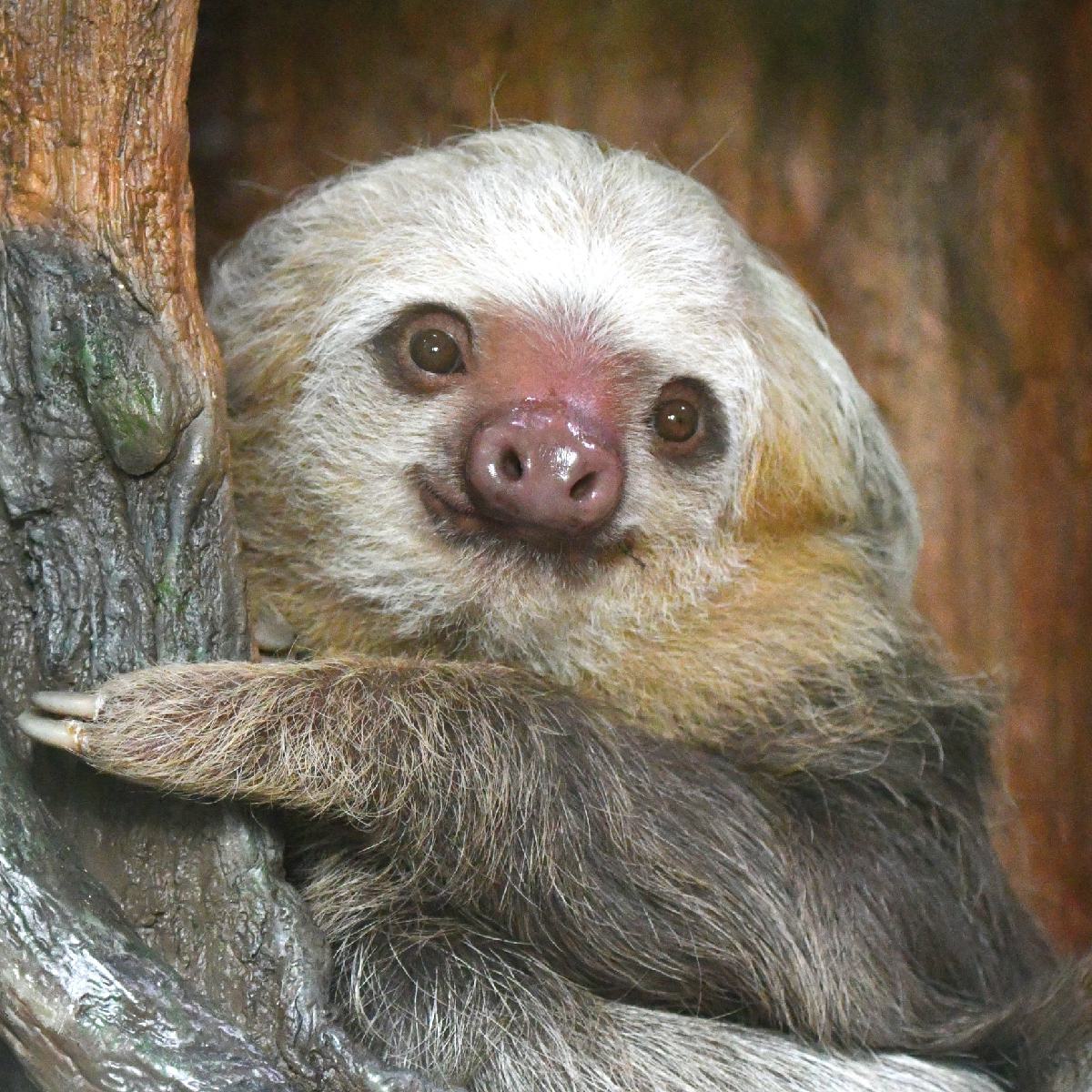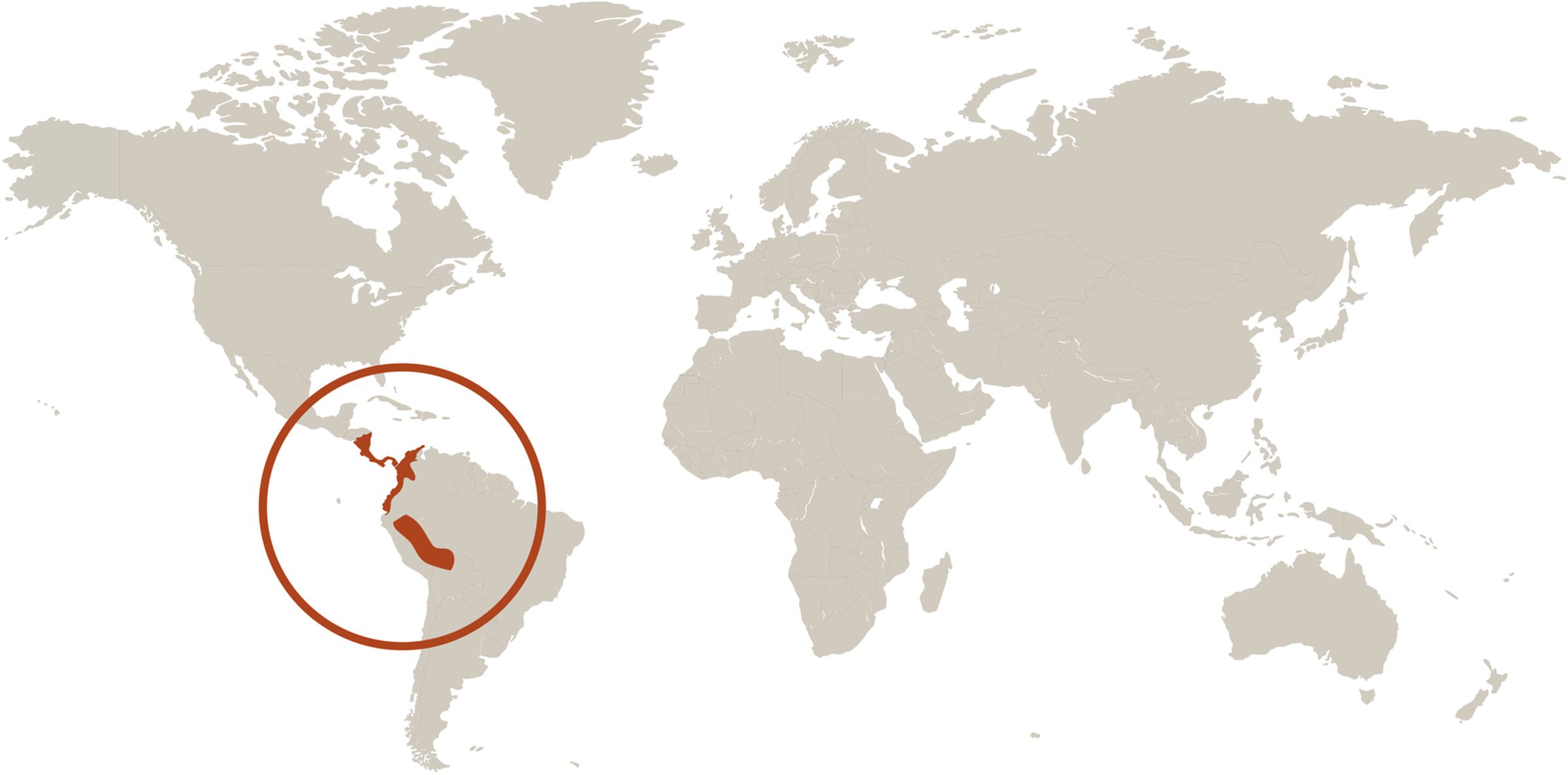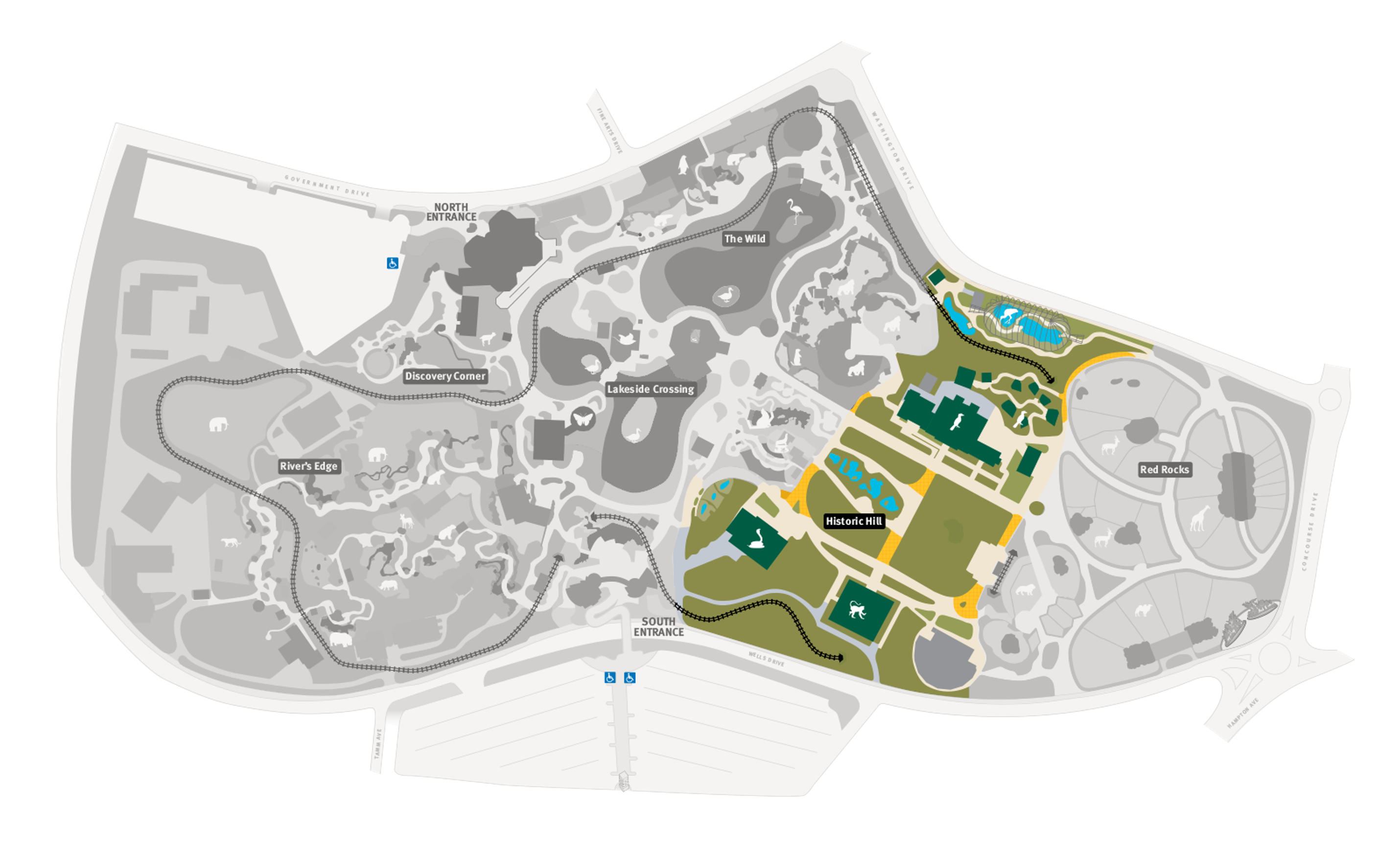
Hoffman's Two-toed Sloth
Choloepus hoffmanni
Did you know?
- Hoffman’s two-toed sloths are part of the Megalonychidae family, which only includes one other species, Linnaeus’s two-toed sloths.
- They live in various habitats and forests in Central and South America.
- They spend almost their entire life upside-down in trees.
- Surprisingly, they are adept swimmers.
- A female sloth gives birth upside-down to one baby.
Adaptations
All two-toed sloths have a number of adaptations related to their upside-down, arboreal lifestyle. They are the only mammals to have hair curves from stomach to back. Also due to their upside-down lifestyle, their face hair grows “up,” which guides water off their faces when it rains. They have about half of the muscle mass of comparable mammals, giving them a light body weight that is useful for living in trees. Their body temperature is exceptionally variable, which enables them to conserve energy.
Taking It Slow
All two-toed sloths have slow metabolisms, which means, in general, they move slowly. It takes about a month for food to move through their digestive tract, and they defecate once a week. They move so slowly that, when found in moist climates, algae grow on their hair, turning parts of their bodies green.
Threat Level
- Unknown
- Common
- Near Threatened
- Threatened
- Endangered
- Critically Endangered
- Extinct in the Wild
Common
The Hoffman's two-toed sloth is widespread and abundant.
Range
Central and South America (southern Belize to northern Argentina)
Habitat
Rain forests, deciduous forests

We care about Hoffman’s two-toed sloths
Deforestation and widespread habitat destruction is the biggest threat to all two-toed sloths. The Zoo supports Pancakes, a Hoffman’s two-toed sloth that lives in the Primate House. We also participate in the Species Survival Plan for two-toed sloths. This is a cooperative breeding program, with a number of zoos working together to ensure the survival of the species. Learn more about how we are helping wildlife around the world.
Find this animal in Historic Hill

SAINT LOUIS ZOO ZONE
Historic Hill
Historic Hill is a lovely stroll through one of the oldest parts of the Saint Louis Zoo. From the 1904 World’s Fair Flight Cage to the Spanish architectural flavor of the 1920s in the Bird House, Primate House and Herpetarium to the finishing touches of our thoroughly modern exhibits, this area of the Zoo has a unique ambiance and a nostalgic history that make it a great destination.

